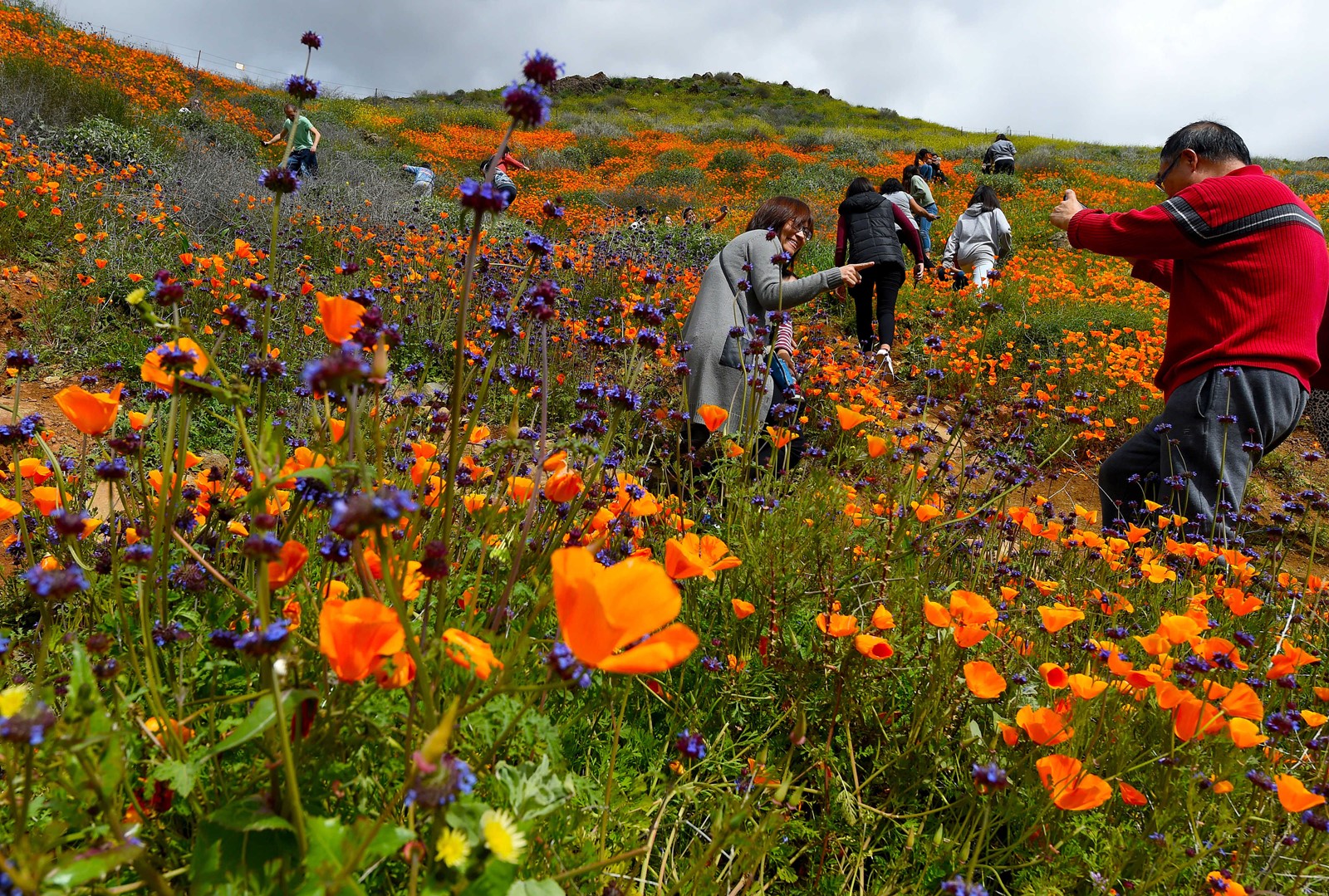
season.”
Anza-Borrego Desert State Park, one of Southern California’s most popular spots for wildflower blooms, received only a third of an inch of rain on Feb. 13, after the longest dry spell — 334 days — since Jan. 7, 1942, said Sicco Rood, facilities and research coordinator for UC Irvine who works at a field station in Anza-Borrego.
The annual average is around 5 1/2 inches of winter rainfall.
“As you can imagine, the bloom is really low at this time,” he said in an email. “This last local rain event has so far not been enough to generate any notable germination around Borrego Springs, as far as I can tell.”
There’s one exception at the Fish Creek watershed, which received a lot of monsoonal rain, in some areas 3 to 5 inches on Aug. 11, with some plants flowering in that area.
There could be a slim chance still for a pop of color: Rood said one former reserve manager with 40 years of experience could only think of one similar year in the early 1990s when there was no significant rain until March.
“There was enough rain that month that led to a great bloom in early April,” he said. “So, we’re going to need some more rain and cool days in March.”
Wildflower growth depends on a delicate dance of weather factors, including rain and its timing, amount of sunlight, seasonal temperatures and wind.
Recent storms may have helped, but only time will tell, because it takes a while for the plants to germinate and grow, said Lori Wear, district interpretive program manager for State Park’s Great Basin area. A few days of hot weather can dry out the budding plants.
“It’s certainly not going to be a spectacular bloom this year,” she said. “We had very little rainfall from basically early autumn through early winter, which really impacted the bloom.”
“It just depends on if we see an early heat wave on what the bloom will look like,” she added.
The Antelope Valley California Poppy Reserve averaged more than 6 inches of rain in 2017, 2019, 2020 and 2023, when sections of the park saw a significant bloom. But it is well below those levels this year.
Right now, it’s mostly brown grass covering the area, Wear said.
A big bloom at the poppy reserve can see as many as 300,000 people visiting in a three-month span to see the phenomenon.
“People really enjoy being out in nature, and when you see wildflowers covering an entire valley floor, from one mountain top to another, it’s spectacular,” Wear said. “You can’t beat that feeling, looking at that awe-inspiring bloom.”
There are other ways people can enjoy the area, she noted. There’s a newly launched film about wildflowers in the visitor’s center and an educational scavenger hunt called “Agents of Discovery” to try.
One thing to remember: “Never pick the flowers. Take only memories.”
The Theodore Payne Foundation has been around since 1983, and every wildflower season it sets up a hotline people can call weekly for a report on where blooms are sprouting.
Instead of open source social media platforms, the foundation works with a trusted group of field reporters who call in their findings, with the first day of this season’s hotline scheduled for Friday.
“There’s people taking road trips and staying in hotels just to see poppies bloom, so we want to make sure it’s a reliable source,” Tilford said.
Tilford noted that some of the popular areas to see wildflowers have been marred by the recent Los Angeles County wildfires, including Malibu, the Pacific Palisades and Eaton Canyon. People are urged to stay clear of those areas to help nature regrow.
The fires have also limited the foundation’s operations because some of the field reporters who typically help the hotline have lost their homes.
A slower season is a good opportunity for the foundation to promote other ways to enjoy nature, such as visiting public gardens or nature centers and hiking mountain trails. It’s also a chance to educate people about perennials such as buckwheat, sage, California lilacs and shrubs that show up in spring, Tilford said.
“We’re trying to get creative and branch out, we still want people to connect with nature and learn how to see these places and do it respectfully,” she said. “There’s a lot of preserved, undeveloped areas that are really a great tool for people to learn about the local ecology.”
People can also order wildflower seeds from the Theodore Payne Foundation to have their own superbloom each year, Tilford said. That’s how the foundation started in 1960, with founder Theodore Payne opening a seed store in downtown Los Angeles.
“We’re continuing his legacy,” she said.
For weekly updates from the Theodore Payne Foundation, call the hotline at 818-768-1802, Ext. 7.


 PREVIOUS ARTICLE
PREVIOUS ARTICLE
